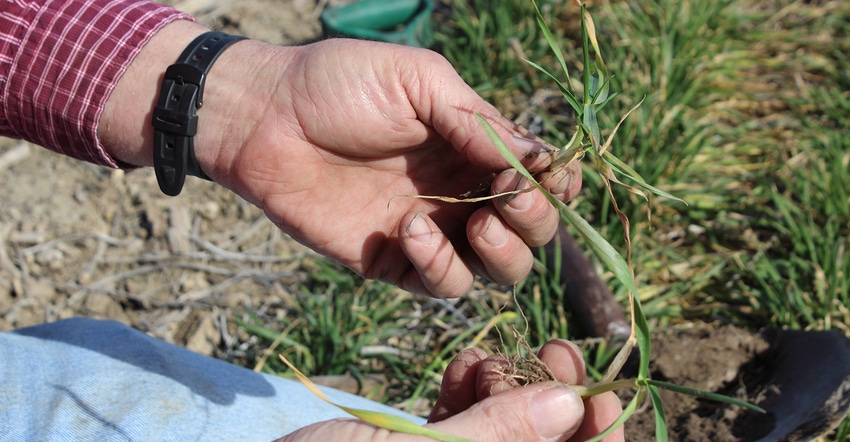
Farmers across Missouri struggled to get their wheat crop in the ground last fall, and winter has not been ideal, causing many farmers to wonder if their wheat plantings will produce a crop this year.
Across Missouri, wheat plantings typically follow harvest. However, the 2018 harvest was delayed in several areas of the state, including key production regions such as southwest, southeast and central Missouri.
Still, in February, the USDA National Agricultural Statistics Service reported winter wheat seeded at 700,000 acres, down only 5% from 2018.
However, those planted wheat acres endured a brutal winter with snow, ice and cold temperatures. While University of Missouri Extension agronomist Greg Luce says wheat is “very resilient” and often can recover from a harsh winter, farmers need to assess their wheat stand this year.
Early look
Farmers should get out into the wheat acres early this spring to determine crop viability. Luce outlined factors to consider when heading to scout fields in a recent MU Integrated Pest Management newsletter. Here are a few key points:
Wheat breaks dormancy at a soil temperature of about 39 degrees F. Allow about 10 days to two weeks of warm weather once green-up begins before counting stands.
Winter survival can vary greatly across the field and is highly dependent on topography.
Winterkill is most likely to occur in areas with little snow cover or winter wheat fields with little to no standing stubble to collect snowfall.
Standing water and ice covering wheat plants for several days can suffocate the crowns. Stands are typically weakened in those areas and can have complete loss of plants.
Exposed hilltops also may have less stand than protected areas of the field.
Assessing the stand
Luce suggests farmers find 10 to 15 locations across the field and count the number of plants or tillers per square foot using only those tillers that have at least three leaves per plant.
But just how does tiller count affect yield?
Luce developed a quick chart based on a table from University of Kentucky Extension grain crops specialist Carrie Knott. Knott looked at yield potential of wheat based on plants per square foot and tillers per square foot.

Wheat stand yield calculation
While stand count can help predict yield, Luce warns, it is only a guide. Factors such as plant vigor, weather, disease, fertility management, planting data and variety ultimately weigh into how a wheat stand responds.
He finds that a stand with 24 or more plants per square foot is enough to maximize grain yield. If the stand is relatively uniform across the field, 15 plants per square foot can produce reasonable grain yields. However, he says a stand with 12 to 15 plants per square foot is the minimum that should be considered for grain harvest, adding that a lower wheat stand population is best planted to another crop.
Luce offers one more piece of advice. For those willing to stick it out with wheat this year, some plants did not have the ability to tiller in the fall. Apply nitrogen early this spring to help promote growth.
About the Author(s)
You May Also Like






